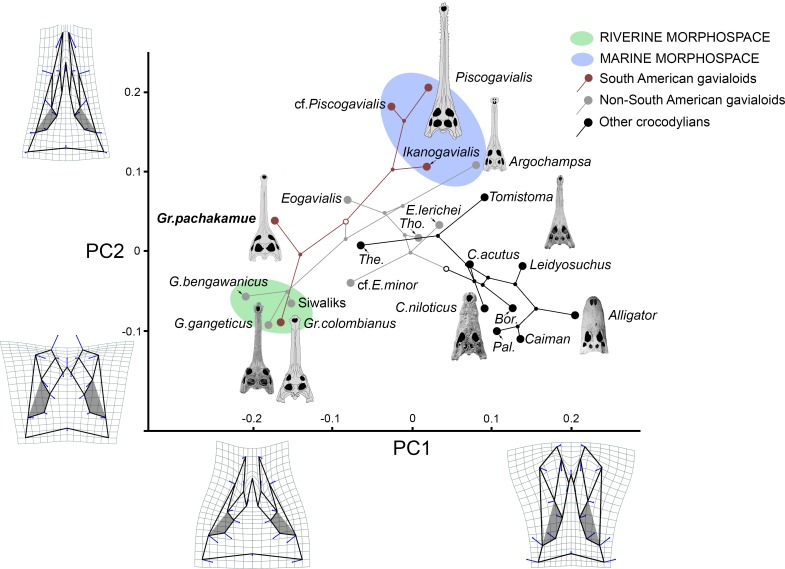Fig 8. Phylogenetic relationships of Crocodylia mapped onto the circumorbital morphospace defined by PC1 and PC2.
Deformation grids depict extreme values along each axis and blue vectors indicate the position of the mean relative to the landmark variation. PC1 correlates mainly with the width of the pre- and post-orbital regions, and orbit length. Species on the positive extreme of PC1 present slender skull tables and interorbital bridge, long orbits and prefrontals, and laterally oriented anterior processes of the jugals, whereas those on the negative extreme bear broad skull tables, wide posterior portion of the interorbital bridge and orbits, short orbits, short prefrontals, and medially oriented anterior processes of the jugals. PC2 correlates with the relative length of the pre-orbital bones, involving mostly the frontal and lacrimals and the width of the prefrontals. Species with higher PC2 scores have comparatively longer and more slender frontals and a narrow interorbital bridge. Taxa with lower scores present short frontal and lacrimal bones and short and wide anterior portion of the interorbital bridge. The phylogenetic morphospace of the orbital and circumorbital region in Miocene South American gavialoids covers most of the variation of the whole clade. Taxon abbreviations: Bor., Borealosuchus; Pal., Paleosuchus; The., Thecachampsa; Tho., Thoracosaurus (S1 Appendix).

